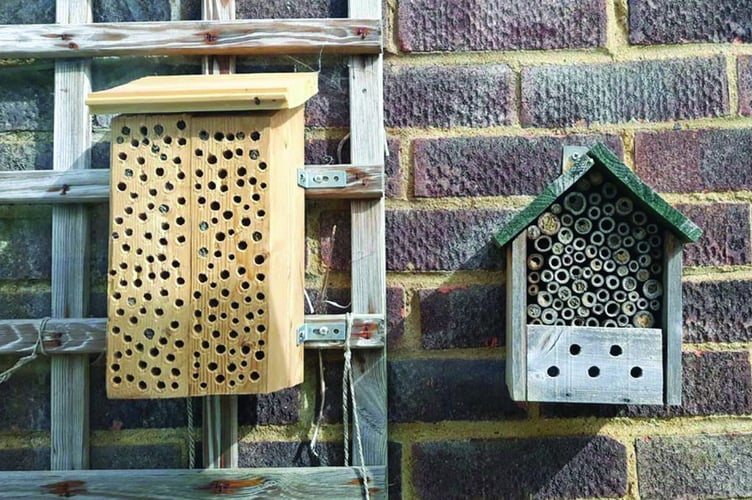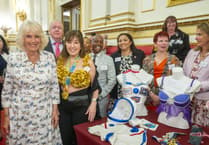ARE you a bee buddy? I’ve been helping to keep the bees buzzing on my patch, writes Royer Slater. How about you?
We are all familiar with the honey bee which lives in hives, but that’s just one of hundreds of bee species to be found in the UK. The others include solitary bees and bumblebees, and we rely on them all to pollinate our flowers, fruit and veg.
It is said we would struggle to survive in a world without bees, nature’s superheroes who need our help to survive.
There are about 250 species of solitary bee in this country, making up 90% of the total bee population. They outperform honey bees and bumblebees as pollinators of our plants and trees.
Solitary bees are so called because they do not live in colonies like the honey bee and most bumblebees. Some nest in the ground, others in holes above ground. But, here’s the buzz… they have suffered through humans destroying their natural habitats.
We can all help by building bee houses, or bee hotels, to provide habitats for these fantastic insects. They are great for providing somewhere for them to nest, and now is the time to put them up.
You can buy them, or make one yourself. The ones in shops and available online often have lengths of hollow bamboo stems in which the bees can nest. You can make something similar yourself by stuffing short lengths of hollowed-out bamboo in a simple wooden housing, or even by making a tube by cutting the base from a large plastic drinks bottle, then stuffing it with bamboo.
Another way is to drill holes of various sizes in pieces of untreated timber. Different species of solitary bee need differently sized holes, so provide a range of diameters from two to 10 millimetres.
I did that myself using some wood offcuts from the garden shed, and solitary bees soon started nesting in them. The females lay several eggs in a tube and each is provided with a ball of pollen as food, and she creates a partition wall between each egg so it hatches in its own cell.

We have already seen bees emerging from last year’s eggs. The males appear first and flit around the openings in wait for the females to emerge, so they can quickly mate before another male pounces. Their job done, the males soon – sadly for them – die while the average lifespan of a female is four to six weeks.
Bumblebees nest in holes underground, in colonies of between 50 and 400 insects, depending on the species. There are 24 species in the UK, each with round bodies covered in soft hair making them appear and feel fuzzy.
The Hampshire-based Bumblebee Conversation Trust says that, over the past 100 years, our landscape has lost millions of the flowers they rely on to survive. It is on a mission to help them through its Bee the Change campaign, which asks us to carry out quick and simple acts.
It urges us to growing bee-friendly plants, create wild bumblebee havens and spread the message to our friends, families and local communities on social media, using the hashtag #BeeTheChange.
The trust is supplying downloadable free resources and “how to” guides. Anyone can use them, whether they live in the city or the countryside, and whether they have a garden, a flowerpot or no outdoor space at all.
Gill Perkins from the trust, said: “We know that many people want to take small, easy action ideas to help bumblebees but perhaps don’t know where to start, or are worried they don’t have enough time.
“We want to make it easy for everyone to get involved. The Bee the Change resources on our website help anyone make the small changes that add up to a big difference to bumblebees. Together we can save the sound of summer, wherever we live.”
To get involved, visit www.bumblebeeconservation.org. It has a handy bumble species identification guides and advice on planting bee-friendly flowers. It also has details of how to become a BeeWalker – spending an hour or so every month to walk a fixed route of about a mile and sending the trust your sightings.




